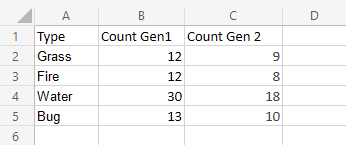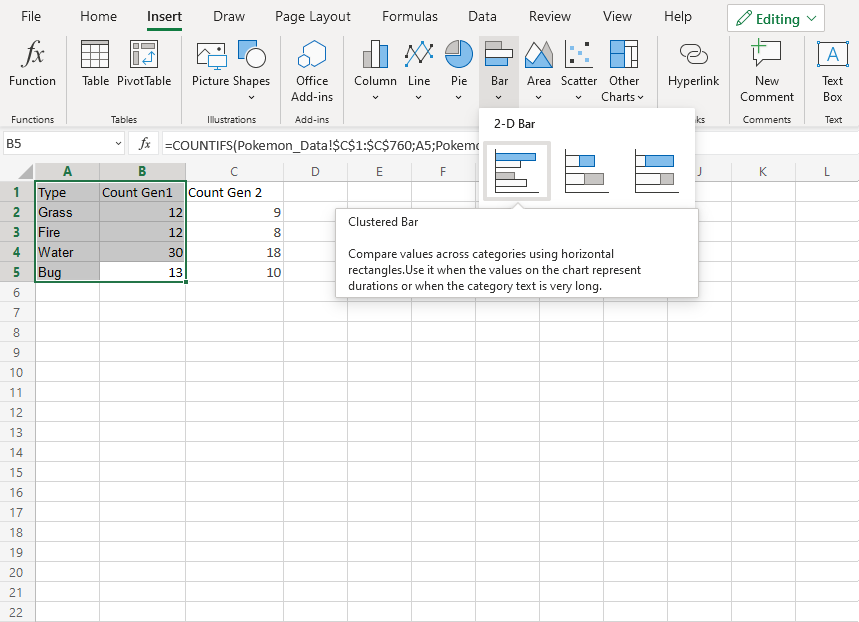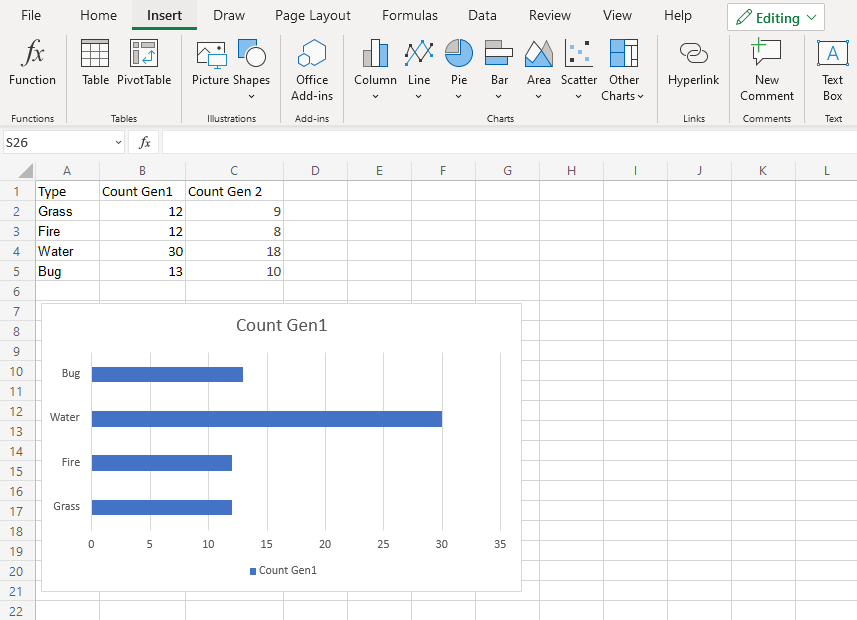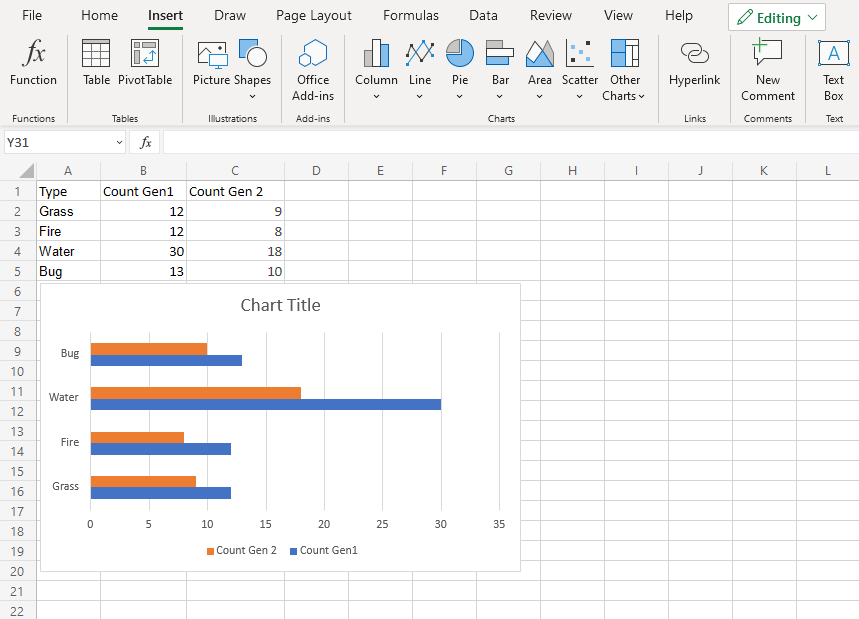Bar Charts
Excel Bar Charts
Data is displayed as vertical bars in bar charts.

The number of Pokemon in each generation is shown in the chart above.
Bar charts are useful for displaying values of qualitative (categorical) data, much like column charts are.
Note: Statistics Data Types has additional qualitative (categorical) data that you can peruse.
There are three different type of bar charts:
- Clustered bar(
)
- Stacked bar(
)
- 100% stacked bar(
)
Clustered Bar Chart
When data value matters more than order, clustered bar charts are utilized.
Example With One Data Column
The amount of Pokemon from generation 1 that are “Grass,” “Fire,” “Water,” and “Bug” is what we’re looking for.
To keep up, you can duplicate the values:

- Select the range A1:B5

2. Select Clustered Bar () from the drop-down menu by clicking on the insert menu, then the bar menu (
).
Note: To access this menu, expand the ribbon.

Excellent Work! You will obtain the chart below by following the aforementioned procedures.

The graphic provides a summary of the generation 1 “Grass,” “Fire,” “Water,” and “Bug” type Pokemon.
Among all Pokemon in the first generation, type “Water” has the most.
Example With Two Data Columns
Now let’s do the same for generation 2 Pokemons and compare the results with the last example.
- Select the range A1:C5

2. Select Clustered Bar () from the drop-down menu by clicking on the insert menu, then the bar menu (
).
Note: To access this menu, expand the ribbon.

You should get the chart below:

The “Grass,” “Fire,” “Water,” and “Bug” type Pokemon from generations 1 and 2 are visually summarized in the graphic.
Generation 2 is displayed in orange, and Generation 1 is displayed in blue.
In both generations, the type “Water” has the most Pokemons.
In addition, there are fewer members of every kind in generation 2 than in generation 1.
